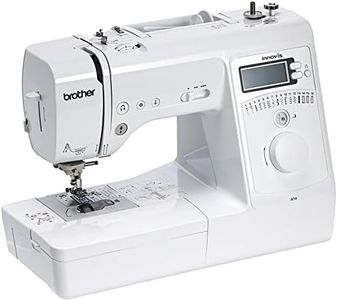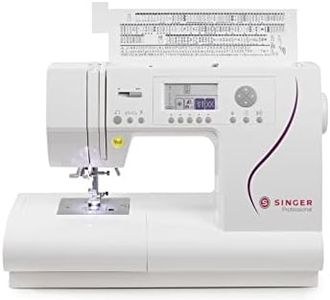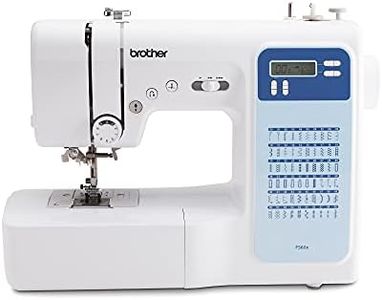We Use CookiesWe use cookies to enhance the security, performance,
functionality and for analytical and promotional activities. By continuing to browse this site you
are agreeing to our privacy policy
5 Best Computerized Sewing Machine For Beginner
From leading brands and best sellers available on the web.Recommended lists
Buying Guide for the Best Computerized Sewing Machine For Beginner
Choosing a computerized sewing machine as a beginner can feel overwhelming because of the wide range of models and features available. The key is to focus on what features will make your sewing experience comfortable and enjoyable, rather than getting distracted by lots of extras you may not use. Understanding which specs matter and how they impact your sewing will help you make a decision that matches your interests and skill level, so your machine can grow with your abilities.Number of Built-in StitchesThe number of built-in stitches shows how many different stitch patterns the machine can create, such as straight, zigzag, and decorative stitches. More stitches offer creative flexibility, especially for decorative work, but as a beginner, you may only need the basic stitches for everyday sewing and practice. Machines with 10-30 stitches often provide the essentials, while 50+ adds more options for creative projects. When choosing, consider if you just want to patch and sew simple items, or if you plan to explore decorative and advanced techniques as you improve.
Automatic Needle ThreaderAn automatic needle threader is a small feature that makes a big difference, especially for beginners. It lets the machine help you pass the thread through the needle's eye quickly and easily. If you have issues with eyesight or patience, this is a useful addition. Most entry-level machines include a simple version, making sewing more approachable and less frustrating, particularly if you expect to be threading needles frequently.
Speed ControlSpeed control allows you to adjust how fast the machine sews, either with manual sliders or digital buttons. For beginners, being able to sew slowly is crucial while learning control and accuracy, so a good machine will let you cap the maximum speed. Simpler machines may have two or three speeds, while more advanced ones offer fine-tuned digital control. Think about your comfort—if you’re nervous about sewing too fast, make sure this feature is easy to use.
Weight and PortabilityThe weight of your sewing machine affects how easy it is to move or store, especially if you don’t have a dedicated sewing space. Machines tend to range from lightweight plastic models to heavier metal frames. If you’ll need to put the machine away after each use or take it to classes, a lighter model is more convenient. However, slightly heavier machines usually offer better stability and less vibration. Consider your storage situation and whether you’ll be moving your machine often.
Screen Interface and ControlsComputerized machines come with different kinds of screens and control layouts. Some have simple LCD screens with push-buttons while others feature larger, touch-sensitive displays. A clear, easy-to-read interface helps you select stitches and settings with less confusion. As a beginner, a straightforward display and intuitive controls will reduce the learning curve and make your first sewing experiences more enjoyable.
Automatic Buttonhole FunctionThis feature means the machine can make buttonholes in a single step with little manual effort, ensuring they’re neat and consistent. Look for machines that advertise 'one-step buttonhole' features, as they’re especially helpful if you plan to sew garments or things with closures. For beginners, a reliable and easy buttonhole function saves frustration and guarantees a more professional result.
Adjustable Presser Foot PressureThe presser foot holds fabric in place as you sew. Being able to adjust its pressure can make a big difference when working with different types of fabric—from light cotton to thick denim. Not all beginner machines include this, but it’s helpful if you want to explore different materials. If you’re sticking mostly to basic sewing cottons, it’s less important; if you want to experiment as your skills grow, look for an adjustable feature.








